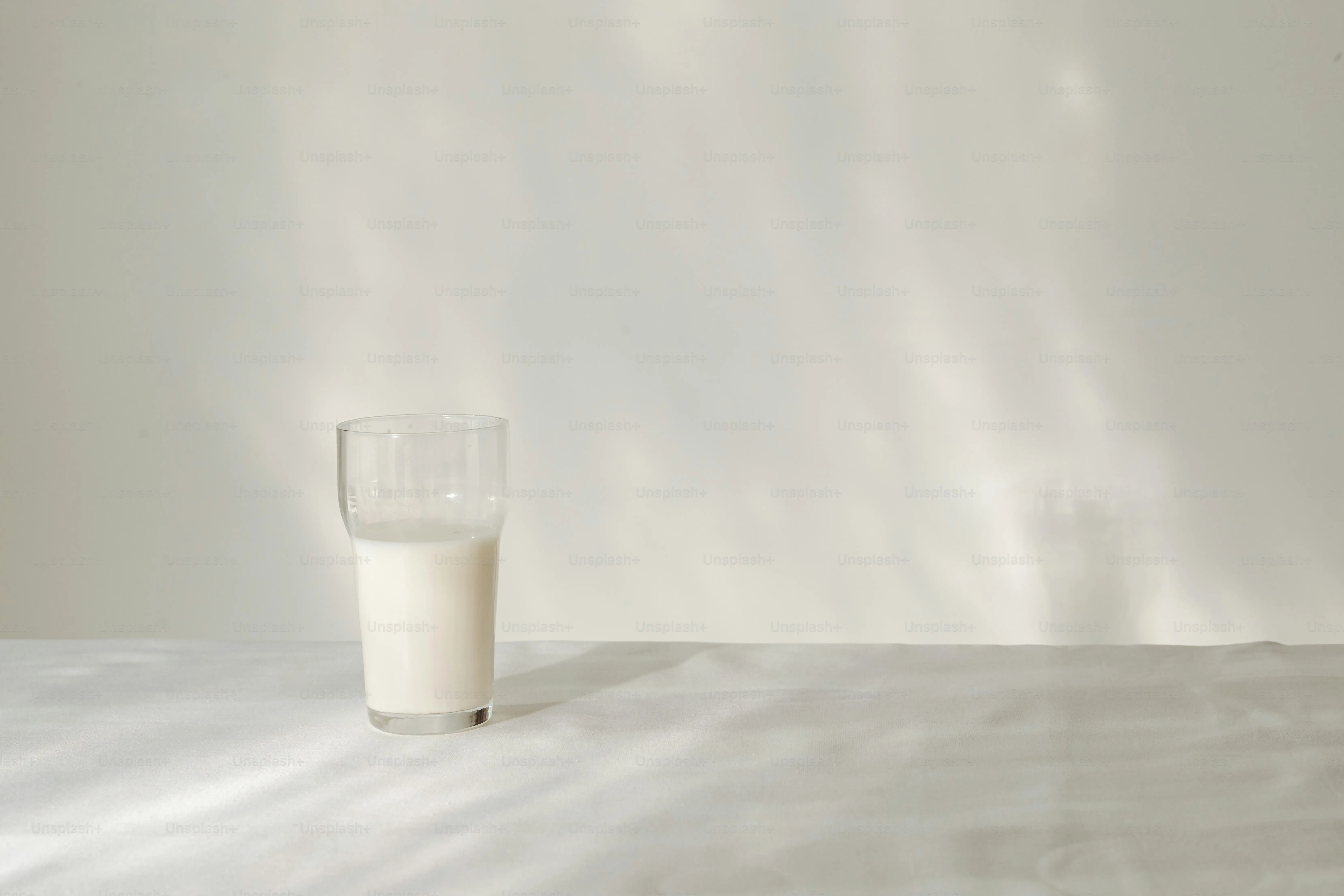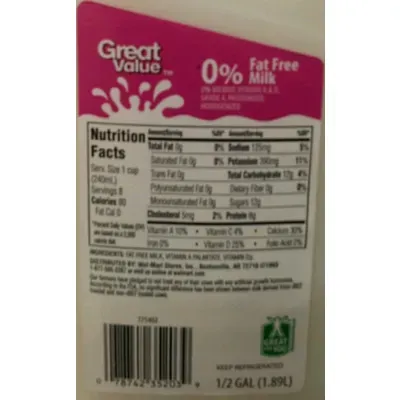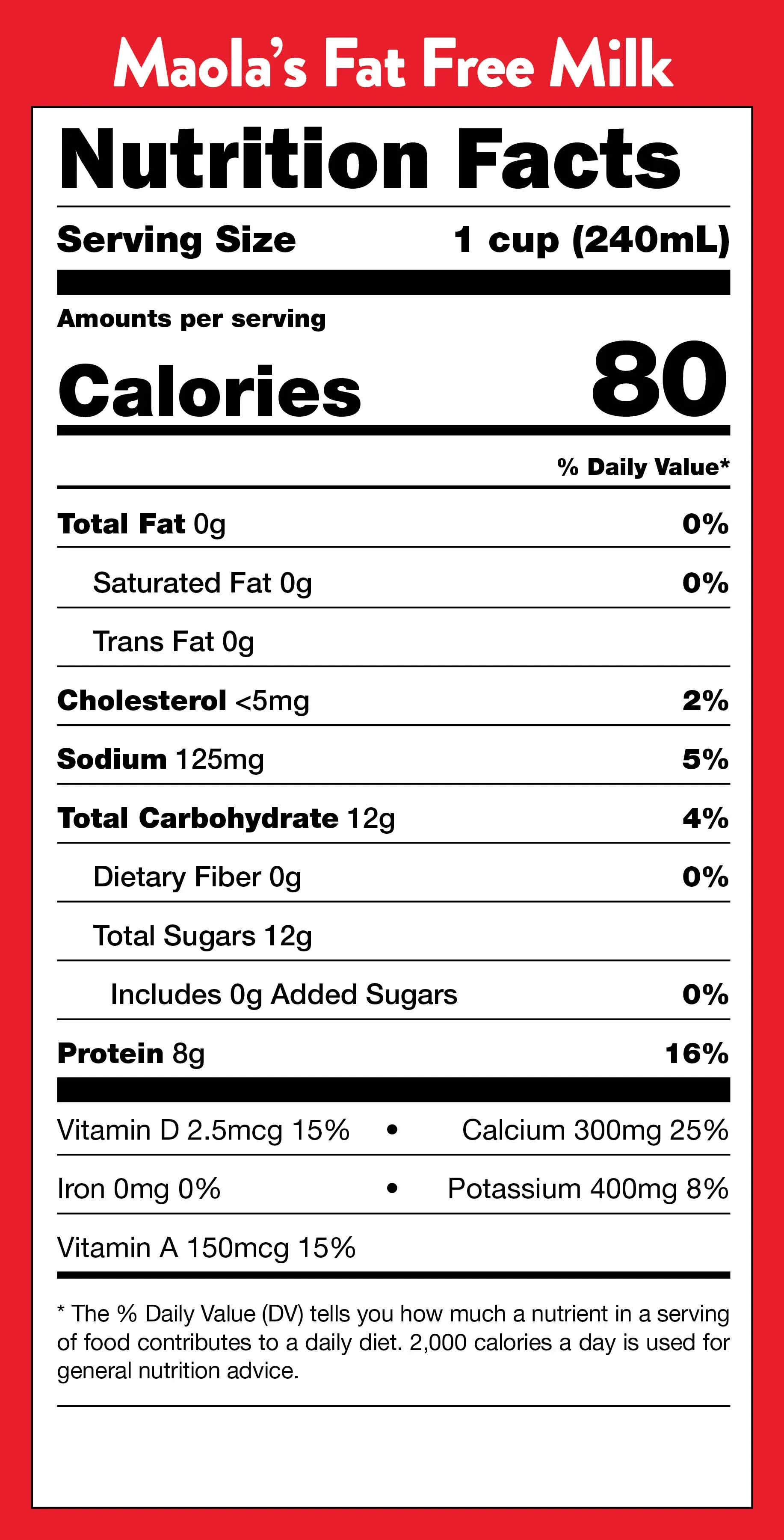Table of Contents
let's be honest, the milk section at the grocery store can feel like a nutritional minefield. Full fat? Low fat? No fat? If you've ever wondered if opting for the leanest dairy choice makes sense, you're not alone. We're diving deep into 0 fat milk nutrition. Forget the old advice you might have heard; let's look at the actual facts. This isn't about pushing one type of milk over another, but understanding what's in the carton labeled "skim" or "non-fat." We'll lay out the precise nutrition breakdown – the protein punch, the calcium load, the vitamins you'll get, and yes, the calorie count. Then, we'll weigh the potential health perks often linked to choosing milk with zero fat. Finally, we'll put 0 fat milk side-by-side with its fattier cousins, giving you the details needed to decide what fits your plate (or cereal bowl). Ready to get informed? Let's go.
The Skinny on 0 Fat Milk Nutrition

The Skinny on 0 Fat Milk Nutrition
Hey, so you're looking into non-fat milk, huh?
It's way more interesting than just "watery milk" once you get past the texture difference.
People hear "0 fat" and might think it's empty calories or just a diet fad with no real substance.
But there's actually a lot going on under the hood nutritionally when you talk about The Skinny on 0 Fat Milk Nutrition.
We're going to break down what makes it tick, looking past the lack of fat to see what good stuff is actually packed in there.
Think protein, calcium, vitamins, minerals – all the things your body needs, just without the saturated fat baggage that comes with whole milk.
It's a popular choice for a reason, and it's not just about blindly cutting calories; it offers some distinct nutritional advantages we should look at.
Key Nutrition Facts: What's in Your Glass?

Key Nutrition Facts: What's in Your Glass?
Breaking Down the Basics
Alright, so you've grabbed that carton of 0 fat milk. What are you actually pouring? Forget the fat content for a second and look at the core components. A standard cup (we're talking 8 ounces here) clocks in around 80-90 calories. That's significantly less than whole milk, which is closer to 150 calories. But here's the cool part: you're still getting a solid protein hit. We're talking 8 grams of lean protein per cup. That's the same amount you'd find in whole milk. Protein helps you feel full and supports muscle repair, which is pretty crucial whether you're hitting the gym or just navigating a busy day. Carbs are present too, usually around 12 grams, mostly in the form of lactose, the natural sugar in milk.
Vitamins and Minerals Galore
The real nutritional power of 0 fat milk isn't just about what's missing (fat), but what's still there in spades. Calcium is the star player, obviously. Milk is practically synonymous with strong bones, and 0 fat milk delivers about 30% of your daily recommended intake per serving. But it's not a one-trick pony. You're also getting a good dose of Vitamin D, which helps your body actually absorb that calcium – they're a dynamic duo. Plus, there's riboflavin (Vitamin B2) and Vitamin B12, both important for energy metabolism. Add in phosphorus, potassium, and a sprinkle of other essential nutrients, and you've got a pretty packed nutritional profile for something so low in calories and fat.
- Protein: 8g per cup (helps with muscle and fullness)
- Calcium: Around 30% DV (essential for bones)
- Vitamin D: Often added (crucial for calcium absorption)
- Riboflavin (B2): Supports energy production
- Vitamin B12: Important for nerve function and energy
- Phosphorus: Works with calcium for bone health
- Potassium: Helps regulate fluids and blood pressure
Why Choose NonFat Milk? Health Benefits Explored

Why Choose NonFat Milk? Health Benefits Explored
Building Strong Bones and More
so beyond just cutting fat and calories, why bother with non-fat milk? The most obvious perk circles back to calcium and Vitamin D. These aren't just random nutrients; they're the dynamic duo for keeping your bones from turning brittle later in life. Think of it as an investment in your skeletal future. Getting enough calcium isn't just about preventing osteoporosis; it also plays a role in nerve function, blood clotting, and muscle contraction. Pairing it with Vitamin D ensures your body can actually put that calcium to work. While you can get these from other sources, milk, even the 0 fat kind, makes it pretty darn easy and affordable.
Supporting Muscles and Overall Health
Here's another angle: that 8 grams of protein per cup we talked about earlier. That's lean protein, meaning you get the muscle-building and satiety benefits without the extra saturated fat found in whole milk. Whether you're trying to recover after a workout or just need something to keep you feeling full between meals, protein is key. Choosing non-fat milk is a straightforward way to boost your daily protein intake without adding significant calories. Plus, all those B vitamins and minerals like potassium contribute to overall energy levels and bodily functions. It's not a magic bullet, but it's a simple, nutrient-dense addition to your diet that supports various aspects of health.
- Supports bone density (Calcium + Vitamin D)
- Provides lean protein for muscle health and fullness
- Contributes B vitamins for energy
- Offers potassium for fluid balance and blood pressure
- Lower in calories and saturated fat compared to whole milk
Navigating Milk Varieties: 0 Fat vs. Others

Navigating Milk Varieties: 0 Fat vs. Others
The Whole Story (and Why It's Different)
let's talk about the big kahuna: whole milk. This is where milk starts before anyone skims off the fat. It usually clocks in around 3.25% fat, sometimes labeled as 4%. That might not sound like a huge number, but it adds up. A cup of whole milk packs about 150 calories and around 8 grams of fat, with a decent chunk of that being saturated fat. Compare that to the 80-90 calories and virtually no fat in a cup of 0 fat milk. The difference is pretty stark, especially if you're watching your calorie or saturated fat intake. Whole milk tastes creamier, sure, because fat carries flavor. But nutritionally, it's a different beast entirely when you're focused on leanness.
Meeting in the Middle: 1% and 2%
Between whole milk and 0 fat milk, you've got the middle ground: 1% and 2% reduced-fat milk. These are attempts to keep some of the mouthfeel and flavor of whole milk while cutting down on fat and calories. 2% milk has, well, about 2% fat, landing around 120 calories and 5 grams of fat per cup. 1% milk is leaner still, with roughly 1% fat, about 100 calories, and 2.5 grams of fat. They offer a sort of compromise. You get slightly fewer calories and less fat than whole milk, but still more than the 0 fat version. The taste and texture are a bit richer than skim, but not as full as whole.
Milk Type | Approx. Calories (per cup) | Approx. Fat (per cup) | Approx. Protein (per cup) |
|---|---|---|---|
Whole (3.25%) | 150 | 8g | 8g |
2% Reduced-Fat | 120 | 5g | 8g |
1% Low-Fat | 100 | 2.5g | 8g |
0% Non-Fat (Skim) | 80-90 | 0-0.5g | 8g |
Why Go Completely Skim?
So, with all these options, why stick to 0 fat milk nutrition? It really boils down to priorities. If maximizing nutrient density per calorie is your goal, 0 fat milk is tough to beat. You get the same powerhouse of calcium, Vitamin D, and protein found in fattier milks, but with significantly fewer calories and virtually no saturated fat. For someone managing weight, tracking macros, or simply trying to reduce saturated fat intake without sacrificing essential nutrients, it's a clear winner. Yes, the flavor is thinner, less rich. That's the trade-off for removing the fat. But in smoothies, cooking, or mixed with other things, the difference is often negligible, and the nutritional advantage is clear.
Making Your Milk Choice
So, we’ve looked at the numbers: 0 fat milk nutrition delivers protein, calcium, and essential vitamins without the saturated fat found in higher percentages. The potential upsides for bone health and maybe even weight management are there, based on the data. It's clear that "skim" isn't just watery white stuff; it's a nutrient-dense option for many. Comparing it to whole or reduced-fat milk shows a clear difference in fat and calorie content, which matters depending on your overall diet and goals. Ultimately, the "best" milk isn't a universal truth carved in stone. It boils down to your individual needs, preferences, and how it fits into your daily eating. Knowing the facts about 0 fat milk just gives you one more tool in your dietary toolbox.
